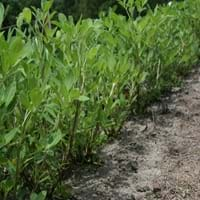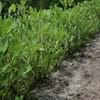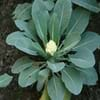Type
Vegetable
Flowering Plants
Origin
South America
Mexico, Central America, South America
Types
Runner Peanuts, Virginia Peanuts, Spanish Peanuts
Not available
Number of Varieties
Not Available
Habitat
Warmer regions
Cultivated Beds
USDA Hardiness Zone
5-9
8-11
AHS Heat Zone
Not Available
12 - 1
Sunset Zone
Not Available
A1, A2, A3, H1, H2, 1a, 1b, 2a, 2b, 3a, 3b, 4, 5, 6, 7, 8, 9, 10, 11, 12, 13, 14, 15, 16, 17, 18, 19, 20, 21, 22, 23, 24
Habit
Clump-Forming
Cushion/Mound-forming
Flower Color
Yellow
Yellow, Orange, Gold, Orange Red
Flower Color Modifier
Bicolor
Bicolor
Fruit Color
Tan, Brown
Not Available
Leaf Color in Spring
Yellow
Green
Leaf Color in Summer
Green, Gray Green
Green
Leaf Color in Fall
Green, Gray Green
Green
Leaf Color in Winter
Green, Gray Green
Light Green
Plant Season
Spring
Spring, Summer, Fall
Sunlight
Full Sun
Full Sun, Partial Sun
Type of Soil
Sandy
Loam, Sand
The pH of Soil
Acidic
Acidic, Neutral
Soil Drainage
Well drained
Well drained
Bloom Time
Summer
Indeterminate
Tolerances
Drought
Drought
Where to Plant?
Ground, Pot
Ground
How to Plant?
Seedlings
Divison, Layering, Stem Cutting
Plant Maintenance
Medium
Medium
Watering Requirements
Water daily during growing season, Water more in summer
Requires regular watering
In Summer
Lots of watering
Lots of watering
In Spring
Moderate
Moderate
In Winter
Average Water
Average Water
Soil pH
Acidic, Neutral
Slightly Acidic
Soil Type
Loam, Sand
Sandy
Soil Drainage Capacity
Well drained
Well drained
Sun Exposure
Full Sun, Partial Sun
Part sun
Pruning
No pruning needed
Remove damaged leaves, Remove dead branches, Remove dead leaves
Fertilizers
5-10-10 fertilizer, High amounts of nutrients, Magnesium, Phosphorous, Potassium
All-Purpose Liquid Fertilizer
Pests and Diseases
Red blotch
Red blotch
Plant Tolerance
Drought
Drought
Flower Petal Number
Single
Single
Edible Fruit
Not Available
No
Fragrant Leaf
Not Available
Yes
Fragrant Bark/Stem
Not Available
Yes
Foliage Texture
Medium
Fine
Foliage Sheen
Matte
Matte
Invasive
Not Available
Sometimes
Attracts
Flying insects, Insects
Butterflies
Allergy
Abdominal pain, Anaphylaxis, Asthma, Diarrhea, Eczema, Itchiness, Low blood pressure, sneezing, Swelling, Urticaria
Not Available
Aesthetic Uses
Not Used For Aesthetic Purpose
Beautification, Decorating walls, Hanging Basket, Showy Purposes, Used as an interior landscaping species
Beauty Benefits
Good for skin, Skin Problems
Not Available
Environmental Uses
Air purification
Air purification, Food for birds
Medicinal Uses
Alzheimer’s Disease, Colon Cancer, Coronary diseases, Energy, Fertility, Fights Depression, Gallbladder Diseases, Heart problems, Infections, Minerals, Nerve pain, Regulates Blood Sugar, Stomach Cancer
Cancer, Diarrhea, Hepatitis, Inflammation, Wounds
Part of Plant Used
Seeds
Flowers
Other Uses
For making oil, Used As Food, Used for producing cooking oil, Used in salads
Air freshner, Condiment, For making oil for cosmetics, Garland, Making Sweet Scented Oil, Medicinal oil, Used as an ointment, Used as Ornamental plant, Used for fragrance, Used for its medicinal properties, Used for Landscaping
Used As Indoor Plant
No
Insignificant
Used As Outdoor Plant
Yes
Yes
Garden Design
Container, Edible, Herb / Vegetable, Tropical
Dried Flower, Landscape, Lawns and Turf
Botanical Name
ARACHIS hypogaea
Tagetes subulata
Common Name
Peanut
Tagetes Sabulata
In Hindi
मूंगफली
Tagetes subulata
In German
Erdnuss
Tagetes Subulata
In French
Cacahuète
Tagetes Subulata
In Spanish
Maní
Tagetes Subulata
In Greek
Αράπικο φιστίκι
Tagetes Subulata
In Portuguese
Amendoim
Tagetes Subulata
In Polish
Arachid
Tagetes Subulata
In Latin
Peanut
Tagetes Subulata
Phylum
Vascular plant
Tracheophyta
Class
Magnoliopsida
Magnoliopsida
Family
Fabaceae
Asteraceae
Clade
Angiosperms, Eudicots, Rosids
Angiosperms, Asterids, Eudicots
Tribe
Dalbergieae
Tageteae
Subfamily
Faboideae
Asteroideae
Number of Species
Not Available
Importance of Peanut and Tagetes Subulata
Want to have the most appropriate plant for your garden? You might want to know the importance of Peanut and Tagetes Subulata. Basically, these two plants vary in many aspects. Compare Peanut and Tagetes Subulata as they differ in many characteristics such as their life, care, benefits, facts, etc. Every gardener must at least have the slightest clue about the plants he wants to plant in his garden. Compare their benefits, which differ in many ways like facts and uses. The medicinal use of Peanut is Alzheimer’s Disease, Colon Cancer, Coronary diseases, Energy, Fertility, Fights Depression, Gallbladder Diseases, Heart problems, Infections, Minerals, Nerve pain, Regulates Blood Sugar and Stomach Cancer whereas of Tagetes Subulata is Cancer, Diarrhea, Hepatitis, Inflammation and Wounds. Peanut has beauty benefits as follows: Good for skin and Skin Problems while Tagetes Subulata has beauty benefits as follows: Good for skin and Skin Problems.
Compare Facts of Peanut vs Tagetes Subulata
How to choose the best garden plant for your garden depending upon its facts? Here garden plant comparison will help you to solve this query. Compare the facts of Peanut vs Tagetes Subulata and know which one to choose. As garden plants have benefits and other uses, allergy is also a major drawback of plants for some people. Allergic reactions of Peanut are Abdominal pain, Anaphylaxis, Asthma, Diarrhea, Eczema, Itchiness, Low blood pressure, sneezing, Swelling and Urticaria whereas of Tagetes Subulata have Not Available respectively. Having a fruit bearing plant in your garden can be a plus point of your garden. Peanut has no showy fruits and Tagetes Subulata has no showy fruits. Also Peanut is flowering and Tagetes Subulata is not flowering . You can compare Peanut and Tagetes Subulata facts and facts of other plants too.





